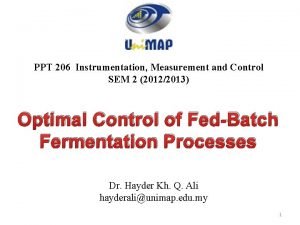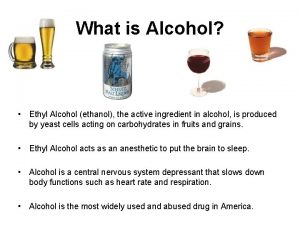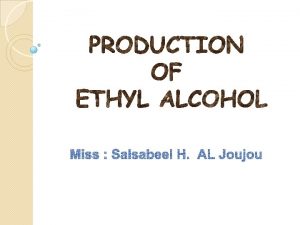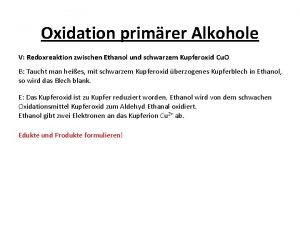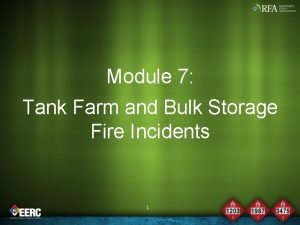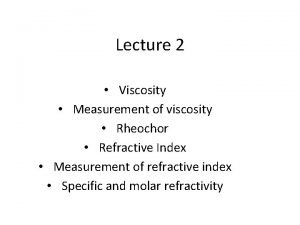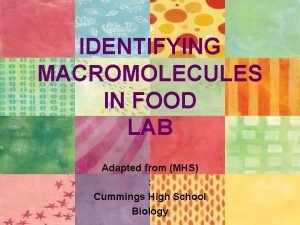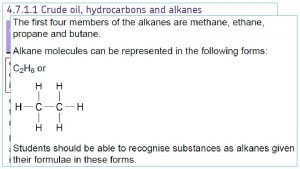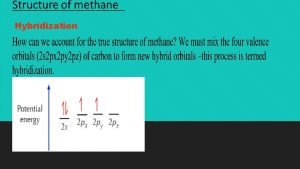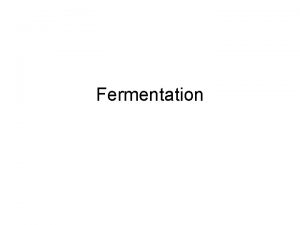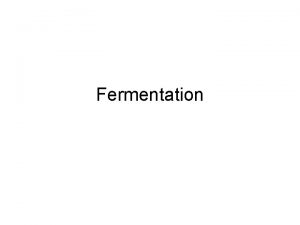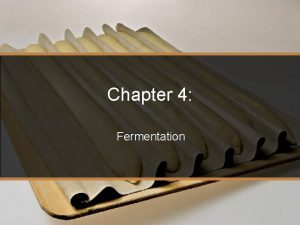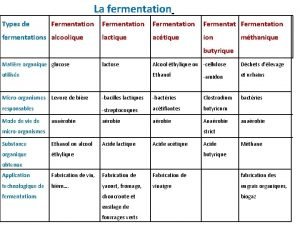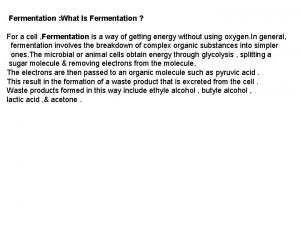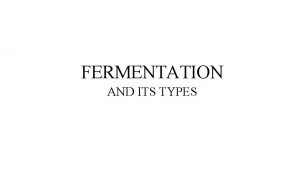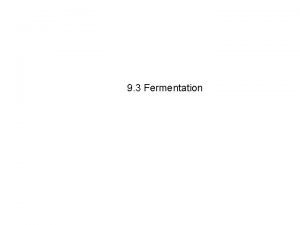Ethanol Production Unit 2 Lesson 3 Fermentation Process















- Slides: 15

Ethanol Production Unit 2, Lesson 3

Fermentation Process Raw Material + Yeast = Ethanol + Carbon dioxide

Fermentation Process C 6 H 12 O 6 = 2 CH 3 CH 2 OH + 2 CO 2

Fermentation process • Typically ethanol is derived from grains such as corn and wheat in which starch is readily available and easily broken down into sugars. • Cellulosic Ethanol- ethanol that is exactly the same as grain-based ethanol, but it is made from agricultural residues (wood, corn stover, grasses, etc. ) • The plant matter has to go through additional processing to breakdown into starches and sugars

Fermentation process – starch dry mill • Starch must first be broken down into simple sugars before fermentation can even occur. • Milling: Corn, barley or wheat is cleaned and then passed through hammer mills to break the exterior hull and grind it into fine powder. • Liquefaction: The meal will then be mixed with water and an enzyme called alphaamylase as a catalyst. • The meal will pass through cookers where the starch is liquefied. • A p. H of 7 is maintained by adding sulfuric acid or sodium hydroxide. • Heat is applied to enable liquefaction. • Cookers with a high temperature stage 120 -150 degrees Celsius and lower holding period of 95 degrees C will be used. • The higher temperature reduces the bacteria in the mash.

Fermentation process - starch dry mill • Saccharification: Mash from the cookers is cooled • Enzyme glucoamylase is added to convert starch molecules to fermentable sugars • Fermentation: Yeast is added to the mash to ferment the sugars to ethanol • • • and carbon dioxide. Mash will flow through several fermenters In a batch fermentation the process takes about 48 hours. Distillation: Fermented mash will then be pumped through multicolumn distillation system where the 10% alcohol will be removed from the solids and water. Alcohol leaves the final column at about 96% strength Residue mash, called stillage, is transferred to the coproduct processing area.

Fermentation process - starch dry mill • Dehydration: Remaining water is removed from the alcohol in a dehydration system. • Often a molecular sieve is used to remove the last bit of water. • Denaturing: Ethanol that will be used for fuel is then denatured with a small amount (5%) of some product like gasoline, to make it unfit for human consumption.


Fermentation process – starch wet mill • Cleaned and inspected corn is steeped (soaked) for up to two days, which begins to break down the bonds holding the starch and proteins together. • Corn is coarsely ground to remove the germ. The germ can be used to make corn oil, and the remainder of that process creates some feed products that can be given to livestock. • The corn slurry is finely ground. The fiber is then taken out using an attritionimpact mill. The fiber is used as an element in animal feeds.

Fermentation process – starch wet mill • Starch and gluten are separated using a centrifuge to make the denser starch fall to the bottom of the mix. The starch continues in the process towards becoming ethanol. Gluten is used as another ingredient in animal feeds. • Water and enzymes are added that ferment the starches into ethanol and other alcohols. Some of the unused starch is removed to be turned into high fructose corn syrup, a common inexpensive sweetener. • During fermentation, the CO 2 gas that has collected in the fermentation chamber is removed and sold to soda companies for carbonation.

Wet-mill process

Fermentation process - cellulose • Made from cellulosic biomass materials that are composed of cellulose, hemicellulose, and lignin. • Plant wastes- corn stover, cereal straws, sugarcane and bagasse • Plant wastes from industrial processes- sawdust, paper pulp • Energy crops- switch grass. • Extracts fermentable sugars from the feedstock, locked in complex carbohydrates called polysaccharides.

Fermentation process - cellulose • Separating complex structures is essential to the efficient and economic production of cellulosic ethanol. • There are two major processes in cellulosic ethanol production • Acid hydrolysis- this is the break-down of complex carbohydrates to simple sugars. • Enzymatic hydrolysis- this process utilizes pre-treatment process to reduce the size of the material to make it accessible for hydrolysis.

Fermentation process - corn

Fermentation process - cellulose
 Post production multimedia
Post production multimedia Dry mill ethanol process
Dry mill ethanol process Computer control of fermentation process ppt
Computer control of fermentation process ppt Fermentering
Fermentering Right triangle trigonometry examples
Right triangle trigonometry examples 3 types of alcohol
3 types of alcohol Uses of ethanol
Uses of ethanol Test for fat
Test for fat Combustion of ethanal
Combustion of ethanal Kupferoxid ethanol reaktionsgleichung
Kupferoxid ethanol reaktionsgleichung Is ethanol bulk gaining or reducing
Is ethanol bulk gaining or reducing Define rheochor in chemistry
Define rheochor in chemistry History of ethanol
History of ethanol Macromolecules in food
Macromolecules in food Catalytic hydration of ethene
Catalytic hydration of ethene Hybridization of ethanol
Hybridization of ethanol


